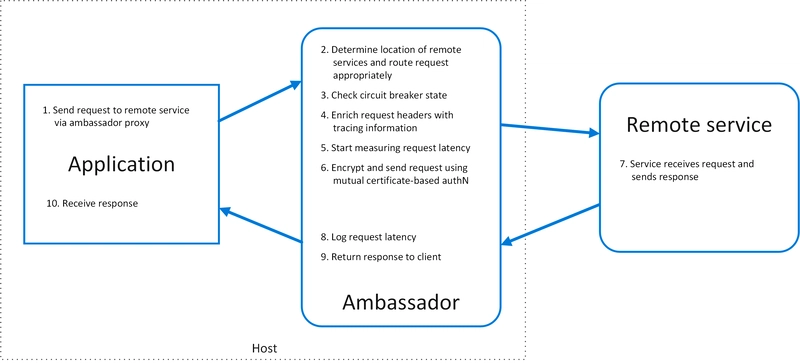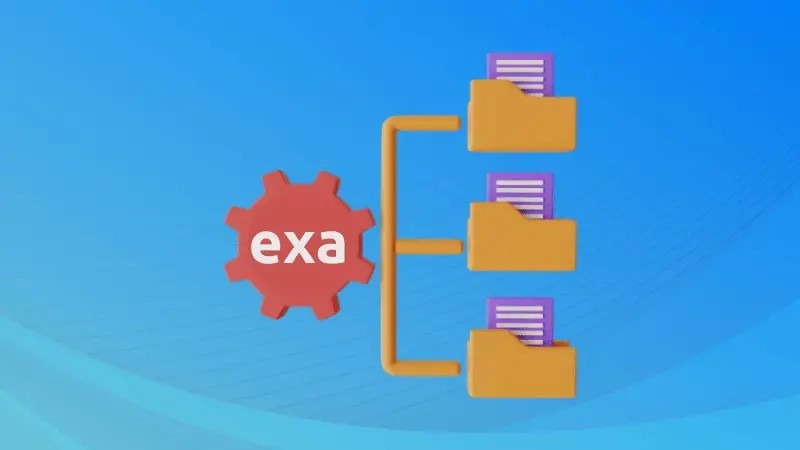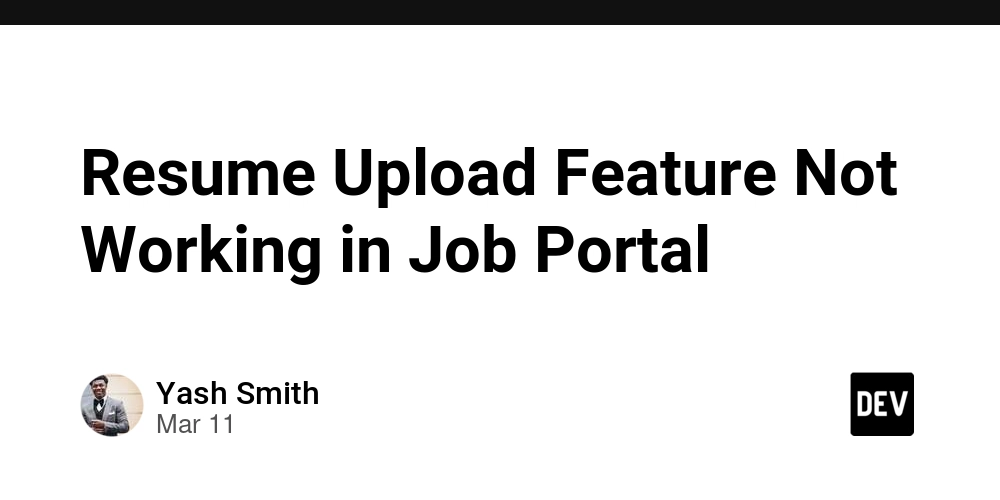Let Legacy Code Fly: Ambassador Pattern in Cloud Data Management
So you're wrangling a mess of services — some old enough to remember SOAP and others so modern they don't even know what XML is. You're trying to unify observability, secure connections, handle retries, maybe throw in some rate-limiting magic... and your manager just casually asks, "Can we do it without touching the legacy code?" Enter: Ambassador Pattern. This one’s not a diplomat, but it does smooth communication between your app and the outside world. What Is the Ambassador Pattern? It’s a sidekick — a sidecar, if you’re into that Kubernetes lingo — that sits next to your main application and handles all the annoying network stuff for you. Think of it like an API bouncer: Need TLS? Done. Logging and metrics? Easy. Retries, circuit breakers, and request routing? Handled. Legacy app that hasn’t been updated since jQuery 1.9? Still covered. Your main app doesn’t even need to know how to do all this. The ambassador handles it — kind of like hiring a consultant because you can’t change what's already in prod without waking the beast. How It Works The Ambassador pattern drops a helper service next to your actual service. That helper is responsible for: Outbound network requests Connection pooling Authentication and auth headers Observability and tracing Routing or even feature flags It's usually deployed on the same host or in the same pod as the consuming app. [ Legacy App ] ---> [ Ambassador Service ] ---> [ External API ] The consuming app just talks to localhost, and the ambassador talks to the real world. Nice and clean. Why It’s a Win in Cloud Design Modern cloud workloads are messy. You’ve got: Multiple languages Multiple environments (on-prem, cloud, hybrid) Changing security policies Centralized networking or observability requirements The Ambassador pattern abstracts those network concerns from your code, so you can: Standardize behavior across languages Let platform/infra teams own cross-cutting concerns Extend legacy apps without code changes Avoid breaking prod every time your TLS cert rotates It's like putting all your networking glue into a black box — one you can actually debug and replace. Example: The following diagram shows an application making a request to a remote service via an ambassador proxy. The ambassador provides routing, circuit breaking, and logging. It calls the remote service and then returns the response to the client application: Use Cases in Real Life You’ve got a Python 2 script in prod that must make API calls with OAuth tokens. Your observability team needs traces, but your legacy app doesn’t support OpenTelemetry. You want to add circuit breakers and retries, but you can’t touch the app code. You’ve got 3 different microservices, written in 3 different languages, all making the same flaky external call. Solution? Drop in an ambassador container next to each service. But Hold Up — Some Trade-offs Every pattern comes with baggage. A few things to watch for: Latency: It’s a middleman. Expect a bit of overhead. Retries: Make sure your ops are idempotent or you’ll regret it. Over-engineering: For single-language teams or simple apps, a shared client lib might be a better fit. Debuggability: Now you’re debugging two services instead of one. Also: who owns the ambassador? Devs? Platform team? Don’t make it a political hot potato. Deployment Patterns Sidecar (Kubernetes-style): Same pod, different container. Daemon/Service: Shared on a VM or host. Works well for bare-metal or VM-based legacy apps. Envoy-based gateways: Advanced setups often use something like Envoy as the ambassador. Tooling like Linkerd, Consul Connect, and Istio also build heavily on this concept. TL;DR ✅ Use when

So you're wrangling a mess of services — some old enough to remember SOAP and others so modern they don't even know what XML is.
You're trying to unify observability, secure connections, handle retries, maybe throw in some rate-limiting magic... and your manager just casually asks, "Can we do it without touching the legacy code?"
Enter: Ambassador Pattern.
This one’s not a diplomat, but it does smooth communication between your app and the outside world.
What Is the Ambassador Pattern?
It’s a sidekick — a sidecar, if you’re into that Kubernetes lingo — that sits next to your main application and handles all the annoying network stuff for you.
Think of it like an API bouncer:
- Need TLS? Done.
- Logging and metrics? Easy.
- Retries, circuit breakers, and request routing? Handled.
- Legacy app that hasn’t been updated since jQuery 1.9? Still covered.
Your main app doesn’t even need to know how to do all this. The ambassador handles it — kind of like hiring a consultant because you can’t change what's already in prod without waking the beast.
How It Works
The Ambassador pattern drops a helper service next to your actual service. That helper is responsible for:
- Outbound network requests
- Connection pooling
- Authentication and auth headers
- Observability and tracing
- Routing or even feature flags
It's usually deployed on the same host or in the same pod as the consuming app.
[ Legacy App ] ---> [ Ambassador Service ] ---> [ External API ]
The consuming app just talks to localhost, and the ambassador talks to the real world. Nice and clean.
Why It’s a Win in Cloud Design
Modern cloud workloads are messy. You’ve got:
- Multiple languages
- Multiple environments (on-prem, cloud, hybrid)
- Changing security policies
- Centralized networking or observability requirements
The Ambassador pattern abstracts those network concerns from your code, so you can:
- Standardize behavior across languages
- Let platform/infra teams own cross-cutting concerns
- Extend legacy apps without code changes
- Avoid breaking prod every time your TLS cert rotates
It's like putting all your networking glue into a black box — one you can actually debug and replace.
Example:
The following diagram shows an application making a request to a remote service via an ambassador proxy.
The ambassador provides routing, circuit breaking, and logging.
It calls the remote service and then returns the response to the client application:
Use Cases in Real Life
- You’ve got a Python 2 script in prod that must make API calls with OAuth tokens.
- Your observability team needs traces, but your legacy app doesn’t support OpenTelemetry.
- You want to add circuit breakers and retries, but you can’t touch the app code.
- You’ve got 3 different microservices, written in 3 different languages, all making the same flaky external call.
Solution? Drop in an ambassador container next to each service.
But Hold Up — Some Trade-offs
Every pattern comes with baggage. A few things to watch for:
- Latency: It’s a middleman. Expect a bit of overhead.
- Retries: Make sure your ops are idempotent or you’ll regret it.
- Over-engineering: For single-language teams or simple apps, a shared client lib might be a better fit.
- Debuggability: Now you’re debugging two services instead of one.
Also: who owns the ambassador? Devs? Platform team? Don’t make it a political hot potato.
Deployment Patterns
- Sidecar (Kubernetes-style): Same pod, different container.
- Daemon/Service: Shared on a VM or host. Works well for bare-metal or VM-based legacy apps.
- Envoy-based gateways: Advanced setups often use something like Envoy as the ambassador.
Tooling like Linkerd, Consul Connect, and Istio also build heavily on this concept.










































































































































































![[The AI Show Episode 144]: ChatGPT’s New Memory, Shopify CEO’s Leaked “AI First” Memo, Google Cloud Next Releases, o3 and o4-mini Coming Soon & Llama 4’s Rocky Launch](https://www.marketingaiinstitute.com/hubfs/ep%20144%20cover.png)


















































































































![[DEALS] The All-in-One Microsoft Office Pro 2019 for Windows: Lifetime License + Windows 11 Pro Bundle (89% off) & Other Deals Up To 98% Off](https://www.javacodegeeks.com/wp-content/uploads/2012/12/jcg-logo.jpg)





































![Is this too much for a modular monolith system? [closed]](https://i.sstatic.net/pYL1nsfg.png)






















































































































_Andreas_Prott_Alamy.jpg?width=1280&auto=webp&quality=80&disable=upscale#)
































































































![What features do you get with Gemini Advanced? [April 2025]](https://i0.wp.com/9to5google.com/wp-content/uploads/sites/4/2024/02/gemini-advanced-cover.jpg?resize=1200%2C628&quality=82&strip=all&ssl=1)













![Apple Shares Official Trailer for 'Long Way Home' Starring Ewan McGregor and Charley Boorman [Video]](https://www.iclarified.com/images/news/97069/97069/97069-640.jpg)
![Apple Watch Series 10 Back On Sale for $299! [Lowest Price Ever]](https://www.iclarified.com/images/news/96657/96657/96657-640.jpg)
![EU Postpones Apple App Store Fines Amid Tariff Negotiations [Report]](https://www.iclarified.com/images/news/97068/97068/97068-640.jpg)
![Apple Slips to Fifth in China's Smartphone Market with 9% Decline [Report]](https://www.iclarified.com/images/news/97065/97065/97065-640.jpg)




































































































































